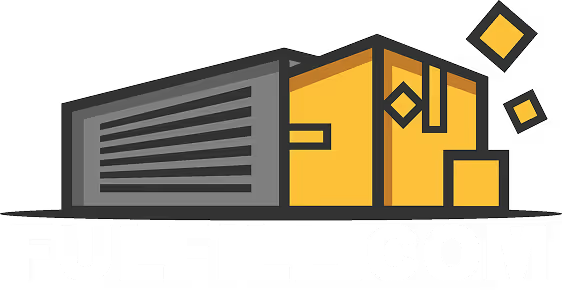Quick Jump
Customs clearance is a critical process in the international trade sector, which involves the preparation and submission of necessary documentation to facilitate exports and imports into a country. The process ensures that all traded goods meet the country's requirements under its customs law. The customs clearance process is a complex and multifaceted one, involving various stages, documents, and parties. This article provides a comprehensive glossary of the customs clearance process, covering all aspects in great detail.
Definition of Customs Clearance
The customs clearance process is a procedure that involves the 'clearing' of goods through customs barriers for importers and exporters. This involves the preparation and submission of documentations required to facilitate export or imports into the country, representing and paying for duty (if necessary), and facilitating communication between the importer/exporter and governmental authorities.
Customs clearance is a necessary step in the international trade process as it ensures that all goods entering or leaving a country comply with that country's laws and regulations. Failure to properly clear goods through customs can result in significant delays, fines, or even seizure of goods.
Key Parties Involved in Customs Clearance
There are several key parties involved in the customs clearance process. These include the importer and exporter, the customs broker, the shipping line, the customs department, and sometimes other governmental agencies.
The importer and exporter are the parties who are sending or receiving the goods. They are responsible for ensuring that the goods comply with all applicable laws and regulations, and for paying any duties or taxes that may be due.
Role of the Customs Broker
The customs broker is a critical player in the customs clearance process. They are licensed professionals who specialize in understanding and navigating the complex laws and regulations related to import and export. They act on behalf of the importer or exporter to ensure that all necessary paperwork is correctly completed and submitted in a timely manner.
Customs brokers also act as a liaison between the importer/exporter and the customs authorities, helping to resolve any issues that may arise during the clearance process. They can provide valuable advice and guidance to their clients, helping them to avoid potential pitfalls and ensure that their goods are cleared quickly and efficiently.
Role of the Shipping Line
The shipping line is the company that transports the goods from the origin to the destination. They play a key role in the customs clearance process as they are responsible for providing the necessary documentation to prove that the goods have been shipped and received.
This documentation, known as the Bill of Lading, is a critical component of the customs clearance process. It serves as a receipt for the goods, a contract of carriage, and a document of title. The shipping line must ensure that this document is correctly completed and submitted to the customs authorities.
Stages of the Customs Clearance Process
The customs clearance process involves several stages, each of which requires specific actions and documentation. These stages include the arrival of goods, the submission of entry documents, the examination of goods, the assessment and payment of duties and taxes, and the release of goods.
Each of these stages is critical to the successful clearance of goods through customs. Failure to correctly complete any stage can result in delays, additional costs, or even the seizure of goods. Therefore, it is essential for all parties involved in the process to understand each stage and the requirements associated with it.
Arrival of Goods
The arrival of goods is the first stage of the customs clearance process. This occurs when the goods physically arrive at the port of entry. At this stage, the shipping line will provide the customs authorities with the Bill of Lading, which serves as proof that the goods have arrived.
The arrival of goods also triggers the start of the customs clearance process. From this point, the importer or their customs broker has a specific amount of time (usually a few days) to submit the necessary entry documents to the customs authorities. Failure to do so within the specified time frame can result in penalties or additional storage fees.
Submission of Entry Documents
The submission of entry documents is the next stage of the customs clearance process. These documents provide the customs authorities with all the information they need to assess the goods and determine any duties or taxes that may be due. The specific documents required can vary depending on the type of goods and the country of import, but they typically include the Bill of Lading, the commercial invoice, and the packing list.
The entry documents must be correctly completed and submitted in a timely manner. Any errors or omissions can result in delays in the clearance process, additional costs, or even the seizure of goods. Therefore, it is critical for the importer or their customs broker to ensure that all documents are accurate and complete.
Examination of Goods
The examination of goods is a critical stage in the customs clearance process. During this stage, the customs authorities physically inspect the goods to ensure that they match the description provided in the entry documents and comply with all applicable laws and regulations.
The examination can be a simple visual inspection, or it can involve more detailed procedures such as sampling or laboratory testing. The extent of the examination will depend on a variety of factors, including the type of goods, the country of import, and the importer's compliance history.
Assessment and Payment of Duties and Taxes
The assessment and payment of duties and taxes is the next stage of the customs clearance process. Once the customs authorities have examined the goods and reviewed the entry documents, they will calculate any duties or taxes that are due.
The amount of duties and taxes will depend on a variety of factors, including the type of goods, their value, and the country of import. Once the duties and taxes have been calculated, the importer or their customs broker must pay them before the goods can be released.
Release of Goods
The release of goods is the final stage of the customs clearance process. Once the customs authorities have received payment of any duties and taxes, they will release the goods for delivery to the importer.
The release of goods is a critical milestone in the customs clearance process. It signifies that the goods have been successfully cleared through customs and are now legally in the possession of the importer. However, it is important to note that the release of goods does not necessarily mean that the customs clearance process is complete. There may still be post-clearance procedures to follow, such as record keeping or reporting requirements.
Common Challenges in Customs Clearance
The customs clearance process can be complex and challenging, with many potential pitfalls. Some of the most common challenges include understanding and complying with complex laws and regulations, dealing with language barriers, managing documentation, and dealing with unexpected costs or delays.
One of the biggest challenges in the customs clearance process is understanding and complying with the complex laws and regulations that govern international trade. These laws and regulations can vary greatly from one country to another, and they can be difficult to understand and interpret. This can make it difficult for importers and exporters to ensure that their goods comply with all applicable requirements.
Dealing with Language Barriers
Language barriers can also pose a significant challenge in the customs clearance process. Many of the documents and communications involved in the process are in English, which may not be the first language of the importer or exporter. This can make it difficult for them to understand and complete the necessary paperwork, and to communicate effectively with the customs authorities.
Furthermore, many countries have their own specific terminology and jargon related to customs clearance, which can be difficult to understand for those who are not familiar with the language. This can lead to misunderstandings and errors, which can delay the clearance process and result in additional costs.
Managing Documentation
Managing the documentation involved in the customs clearance process can also be a significant challenge. The process requires a large number of documents, each of which must be correctly completed and submitted in a timely manner. Any errors or omissions can result in delays, additional costs, or even the seizure of goods.
Furthermore, many of the documents required for customs clearance are legal documents, which can be complex and difficult to understand. This can make it difficult for importers and exporters to ensure that they are completing the documents correctly and providing all the necessary information.
Dealing with Unexpected Costs or Delays
Unexpected costs or delays can also be a significant challenge in the customs clearance process. The process involves a number of fees and charges, some of which may not be immediately apparent. These can include duties and taxes, customs broker fees, storage fees, and penalties for non-compliance.
Delays in the customs clearance process can also result in additional costs. These can include storage fees for goods that are held at the port of entry, and penalties for late submission of documents or payment of duties and taxes. Furthermore, delays can disrupt the importer's or exporter's business operations, resulting in lost sales or additional costs.
Conclusion
Customs clearance is a complex and critical process in international trade. It involves a number of stages, each of which requires specific actions and documentation. The process also involves several key parties, including the importer and exporter, the customs broker, the shipping line, and the customs authorities.
Despite the challenges involved, a successful customs clearance process is essential for the smooth flow of goods across borders. It ensures that all goods entering or leaving a country comply with that country's laws and regulations, and it facilitates the collection of duties and taxes. By understanding the customs clearance process and the roles of the various parties involved, importers and exporters can ensure that their goods are cleared quickly and efficiently, avoiding delays and additional costs.










